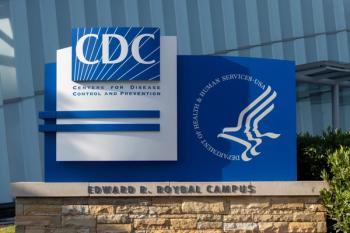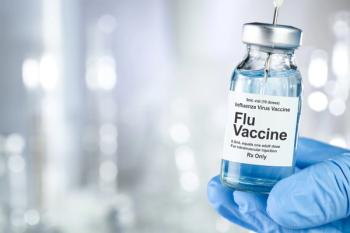
- Immunization Guide for Pharmacists
- Volume 1
- Issue 4
Healthy People 2020: Immunization Goals
The goal of the Healthy People initiative is to “provide science-based, 10-year national objectives for improving the health of all Americans.”
The goal of the Healthy People initiative is to “provide science-based, 10-year national objectives for improving the health of all Americans.” The most recent initiative, Healthy People 2020, which launched in 2010, has a vision of “a society in which all people live long, healthy lives.” To reach this vision, the goals of Healthy People 2020 include1:
- Longer, better-quality lives without preventable disease, disability, injury, or premature death
- Better health and health equity without disparities
- Social/physical environments that encourage better health
- Better quality of life and healthy development/ behaviors
A total of 42 topics and objectives are incorporated into Healthy People 2020; however, one that is especially important to pharmacists is the topic of immunization and infectious disease. The goal under this topic is to “increase immunization rates and reduce preventable infectious diseases.”2 Despite an increase in life expectancy largely due to immunizations, infectious diseases are still a major cause of illness, disability, and death.
Vaccines, particularly childhood immunizations, continue to be a cost-effective preventive service and provide a high return on investment. For each birth cohort vaccinated with routine immunizations, 33,000 lives are saved, 14 million cases of disease are prevented, spending is reduced by $9.9 billion, and another $33.4 billion in indirect costs are saved.2
Still, about 42,000 adults and 300 children die from vaccine-preventable diseases each year in the United States (not including deaths from the 2009 H1N1 influenza outbreak and influenza deaths in general).2 Communities with areas of unvaccinated or undervaccinated populations are at increased risk for outbreaks.2 Improved surveillance is critical in reducing illness, hospitalization, and death from vaccine-preventable and other infectious diseases. Better surveillance will save lives by allowing maximum time for public health response, as well as rapid sharing of information and identification of patients in need of immediate treatment.
The immunization recommendations for Healthy People target 17 diseases. Below, we discuss the progress that has been made to meet the Healthy People 2020 goals for vaccination in 4 of these diseases.
HUMAN PAPILLOMAVIRUS
The Healthy People 2020 goal for human papillomavirus (HPV) vaccination for adolescents aged 13 to 18 years is an 80% vaccination rate for the HPV series in females.3 There was a 5% increase from 2016 to 2017 in adolescents who completed the HPV vaccination. In 2017, approximately 66% of adolescents received the first dose, and 49% completed the series.4
INFLUENZA
Acute respiratory infections, including pneumonia and influenza, are the eighth leading cause of death in the United States with 56,000 deaths annually. More than 200,000 hospitalizations and 36,000 deaths occur each year due to influenza.2 The goal of Healthy People 2020 is to “increase the percentage of children and adults who are vaccinated annually against seasonal influenza.”5 Using the baseline rate of 38.1% of noninstitutionalized adults 18 years and older vaccinated against influenza during the 2010-2011 influenza season, the Healthy People 2020 target is 70%.5 The CDC reported that, as of November 2018, 44.9% of adults had received the influenza vaccine.6
PNEUMONIA
The Healthy People 2020 goal for pneumonia is to “reduce invasive pneumococcal infections.”5 Goals for adults do not center around vaccination, but rather the number of cases reported. The baseline was “40.7 new cases of laboratory-confirmed invasive pneumococcal infection per 100,000 adults aged 65 years and over” in 2008, and the target for 2020 is 31.0 cases per 100,000.5 In 2012, there were 29.6 new cases per 100,000, and in 2013, the latest year for which data are available, there were 30.5 per 100,000.5 From 2015 to 2016, pneumococcal vaccination increased 3.3% to 66.9% among adults 65 years and older.7
SHINGLES
The goal of Healthy People 2020 is to “increase the percentage of adults who are vaccinated against zoster (shingles).”5 In 2008, the baseline year, 6.7% of adults 60 years and over received the shingles vaccine. The target for 2020 is 30%.5 Although Shingrix (recombinant zoster vaccine) is recommended as the preferred shingles vaccines by the ACIP,8 data are not yet available on Shingrix vaccination rates for adults 50 years and older. In 2016, 33.4% of adults 60 years and older reported receiving Zostavax (live zoster vaccine), an increase from the 31% reported in 2015.9
Healthy People 2020 is not yet completed; however, planning is already underway for Healthy People 2030, the fifth edition of Healthy People. The developers aim to address new challenges and build on lessons learned from previous decades.10 Much progress has been made in past years; but, the United States still lags behind other developed countries on “key measures of health and well-being: including life expectancy, infant mortality, and obesity, despite spending the highest percentage of its gross domestic product on health. A challenge for Healthy People 2030 is to guide the United States in achieving our population’s full potential for health and well-being so that we are second to none among developed countries.”11
Pharmacists play an important role in increasing vaccination rates. As frontline health care providers, pharmacists can consult with patients to access their vaccination status, educate them on the importance of vaccines, recommend which vaccinations are needed, and administer vaccinations. Vaccines should always be documented in Immunization Information Systems, and patients should also keep documentation of vaccinations received, for their personal records.12
Karen Berger, PharmD, is a pharmacist at an independent pharmacy in northern New Jersey.
REFERENCES
- About Healthy People. Office of Disease Prevention and Health Promotion website. healthypeople.gov/2020/About-Healthy-People. Accessed April 28, 2019.
- Immunization and infectious diseases overview. Office of Disease Prevention and Health Promotion website. healthypeople.gov/2020/topics-objectives/topic/immunization-and-infectious-diseases. Accessed April 28, 2019.
- Healthy People 2020 national immunization goals. Washington State Department of Health website. doh.wa.gov/Portals/1/Documents/Pubs/348-458-HealthyPeople2020ImmunizationGoals.pdf. Published March 2015. Accessed April 28, 2019.
- More US adolescents up to date on HPV vaccination [news release]. Atlanta, GA: CDC; August 23, 2018. cdc.gov/media/releases/2018/p0823-HPV-vaccination.html. Accessed April 28, 2019.
- 2020 topics & objectives: immunization and infectious diseases. Office of Disease Prevention and Health Promotion website. healthypeople.gov/2020/topics-objectives/topic/immunization-and-infectious-diseases/objectives. Accessed April 28, 2019.
- Early-season flu vaccination coverage—United States, November 2018. CDC website. cdc.gov/flu/fluvaxview/nifs-estimates-nov2018.htm. Reviewed December 14, 2018. Accessed April 28, 2019.
- Vaccination coverage among adults in the United States, National Health Interview Survey, 2016. CDC website. cdc.gov/vaccines/imz-managers/coverage/adultvaxview/pubs-resources/NHIS-2016.html. Reviewed February 8, 2018. Accessed April 28, 2019.
- Shingles (herpes zoster) vaccination. CDC website. cdc.gov/vaccines/vpd/ shingles/index.html. Reviewed November 22, 2016. Accessed April 28, 2019.
- Shingles surveillance. CDC website. cdc.gov/shingles/surveillance.html. Reviewed January 19, 2018. Accessed April 28, 2019.
- Development of the National Health Promotion and Disease Prevention Objectives for 2030. Office of Disease Prevention and Health Promotion website. healthypeople.gov/2020/About-Healthy-People/Development-HealthyPeople-2030. Accessed April 28, 2019.
- Healthy People 2030 framework. Office of Disease Prevention and Health Promotion website. healthypeople.gov/2020/About-Healthy-People/ Development-Healthy-People-2030/Framework. Accessed April 28, 2019.
- Standards for practice: vaccine documentation. CDC website. cdc.gov/vaccines/hcp/adults/for-practice/standards/documentation.html. Accessed April 28, 2019.
Articles in this issue
over 6 years ago
Empowering Patients to Know Their Immunization Historyover 6 years ago
Immunizing Patients Is Worth Pharmacists' and Technicians' Timeover 6 years ago
Tackling Vaccination Hesitancy Unrelated to Medical Exemptionover 6 years ago
Addressing Immunizations in Pregnant and Lactating Womenover 6 years ago
Hepatitis B Virus: Who Is at Risk, and What Can We Do?over 6 years ago
New Vaccines in the Pipeline 2019Newsletter
Stay informed on drug updates, treatment guidelines, and pharmacy practice trends—subscribe to Pharmacy Times for weekly clinical insights.




















































































































































































































